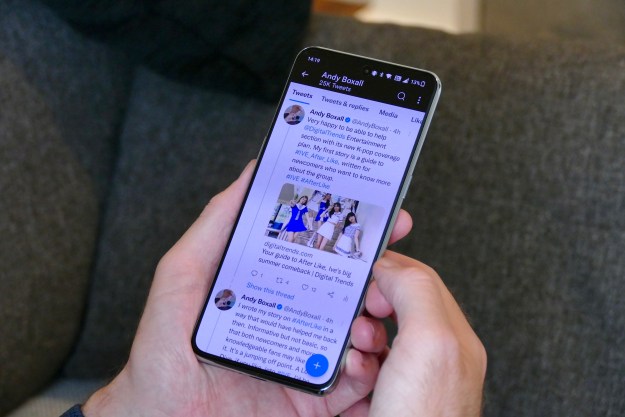
In case you couldn’t tell, the Web and social media are changing us. Even though this might seem obvious, we don’t spend much time thinking about the actual repercussions of our constant connectivity are affecting our day-to-day physical interactions, but scientists say the Internet is definitely leaving its mark on us. The connected generation is quicker on their feet, able to find and analyze information faster than their parents, but there’s also a downside to this evolution.
Take for example a study by UCLA professor Gary Small in 2007. Three regular Internet users and three neophytes were asked to browse websites, in an attempt to point out the cognitive differences between “heavy” and “light” multitaskers.
To no one’s surprise, Small discovered stark differences in the neural activity between both parties when tasked to Google pre-assigned topics. The part of the experienced Internet users’ brains involved in decision-making and problem-solving lit up like fireworks, but the same couldn’t be said for the other half of the group.
After further testing in which all test participants were asked to browse the Web for one hour a day, Small discovered that the “inexperienced” Internet users’ brains lit up like their experienced counterparts six days later. Long story short, people’s Web surfing habits change their neural pathways.
The repercussions of these changes have been tested and tested again by researchers, so we have a pretty good basis to say that the smallest of environmental stimuli are capable of stealing away our attention. With multiple browser tabs, mobile devices, and a constant connection to friends and information from the Internet, they’re likely to jump from one activity to another in an instant. You might call this multi-tasking, but scientists call it a problem.
A 2009 Stanford study concluded that people who were incessantly plugged into the Internet were “suckers for irrelevancy.” Media multi-taskers performed poorly compared to the test subjects that weren’t frequently online in three different tests that gauged their memory and monitored how they filtered out irrelevant stimuli and switched between tasks. “The high multi-taskers are always drawing from all the information in front of them. They can’t keep things separate in their minds,” researcher Eyal Ophir says.
It doesn’t help that U.S. households have on average 5.7 Internet-connected devices. It’s getting more difficult to stay disconnected.
This fact rings true especially for teenagers, who tend to feel anxious if they’re offline and unable to see the latest status updates or emails. “If you’re being deluged by constant communication, the pressure to answer immediately is quite high,” MIT psychologist Sherry Turkle told The New York Times. Teenagers had a “terrific interest in knowing what’s going on in the lives of their peers, coupled with a terrific anxiety about being out of the loop,” psychotherapist Michael Hausauer added. These comments, however, were focused on texting, which was where much of our constant chatting was happening back in 2009. But technology has come a long way since SMS, and messaging apps, social networks, and of course the ever-present smartphones that bring them to us are only heightening this. The average smartphone owner has installed 41 apps, according to Nielsen; that’s a lot of opportunity for interruption.
All of this is effecting are real-life communication habits. A Stanford study says that students will choose to text classmates down the hall instead of talking to them in person, and a Pew Internet Research Center study supports the Stanford study’s findings. In fact, teens will opt for texting in lieu of phone calls, emails, and face-to-face conversations. Consequently these teens’ ability to read facial expressions and communicating in person diminishes.
At the same time, since people spend more and more time online, they’re resorting to making friends through social networks, which try to surface matches based on similar “interests.” But what happens is that these people tend to socialize with a limited bubble of friends who aren’t from the vast walks of life, which means we don’t see a variety of perspectives. This limits Internet users to hearing what they want to hear, what they want to know, which by in large means that they’re never exposed to people with opposing viewpoints.
Given all this, it’s not surprising that our ability to soak up information is curbed by the ease of simply searching for that information on Google, or obtaining our friend’s contact info with a few taps. And Internet-connected device owners really aren’t making much of an effort to remember anything – important dates, phone numbers, middle names, addresses, it’s all find-able thanks to Twitter or Google or LinkedIn or Facebook … etc.
At the same time as the reliance on devices grow, skills that were once critical and taught in classrooms like navigation and handwriting are being replaced and even dying out. The next evolution of all this could be our movement away from knowing how to use smartphones and computers; devices like Google Glass would build in this function and we’d start to adapt away from our current habits. What the social repercussions of that would be remain to be seen.
Editors' Recommendations
- Here’s how to delete your YouTube account on any device
- Why is Twitter called X now? Here’s everything you need to know
- Level up your company’s social media strategy with Sprout Social
- Having trouble accessing your Instagram account? You’re not alone
- YouTube is rolling out handles. Here’s what you need to know


